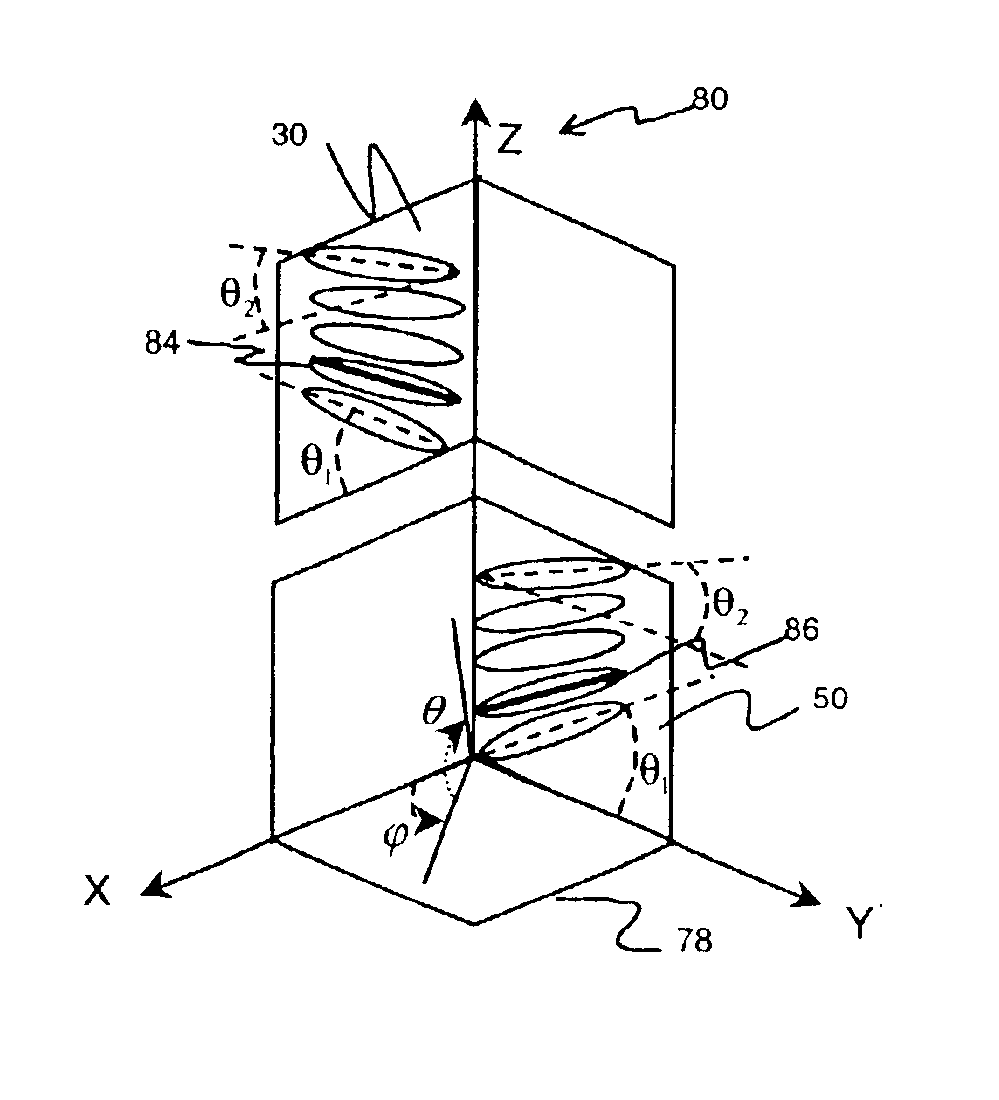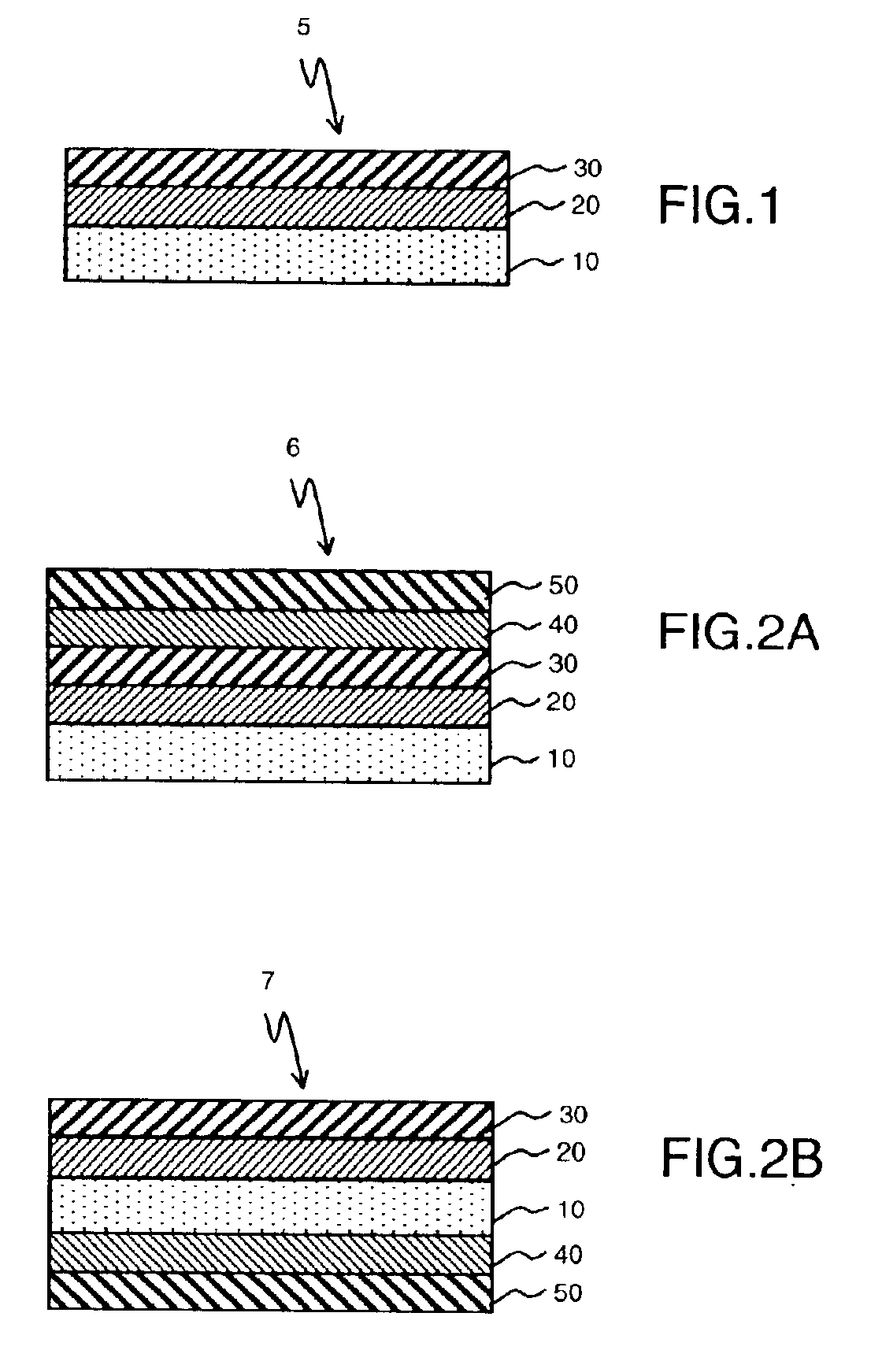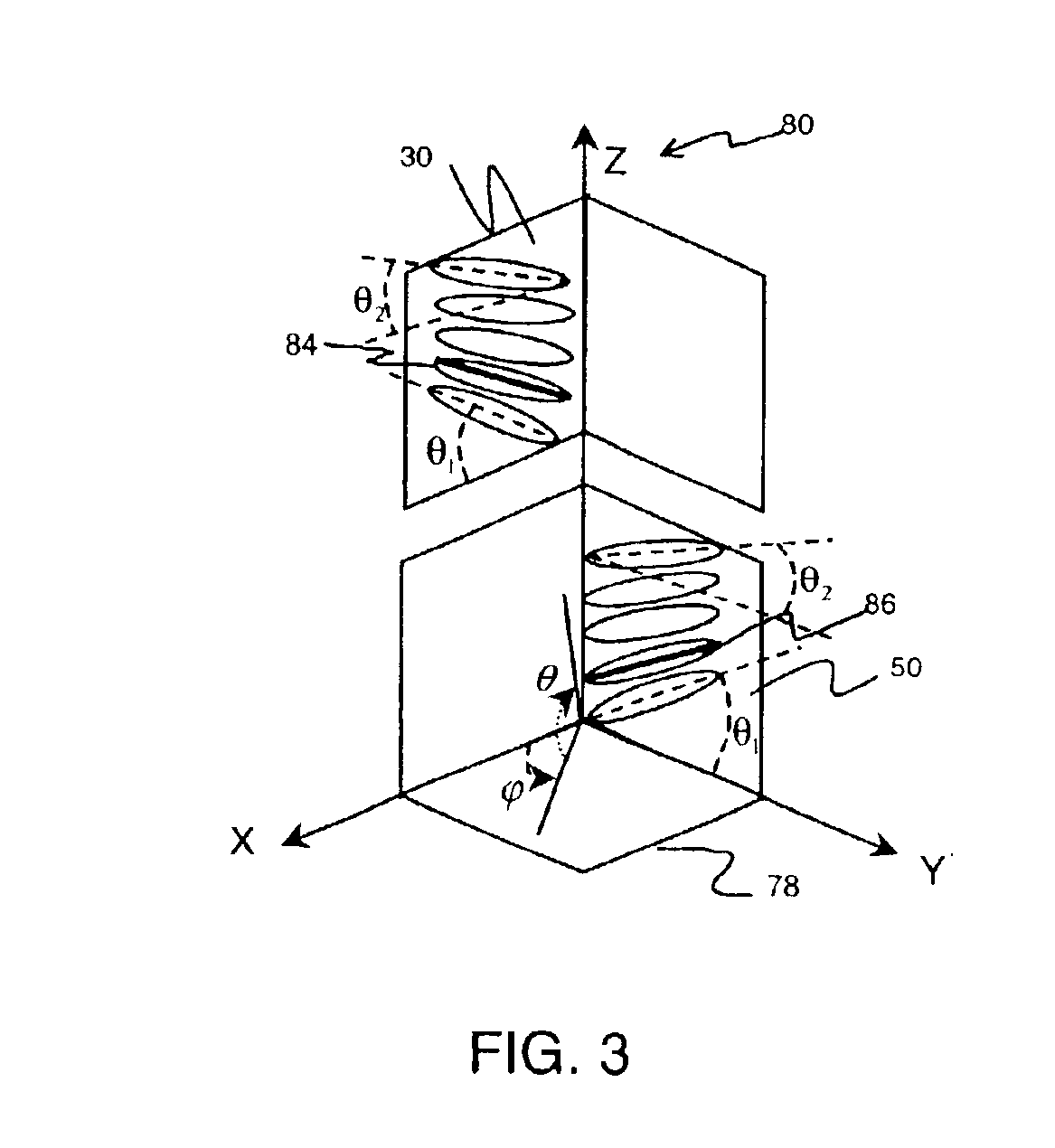Process for making an optical compensator film comprising an anisotropic nematic liquid crystal
a liquid crystal and anisotropic technology, applied in the field of making optical compensators, can solve the problems of color or hue shift, color reproduction degradation, and tendency to light, and achieve the effect of preventing or reducing adhesion failur
- Summary
- Abstract
- Description
- Claims
- Application Information
AI Technical Summary
Benefits of technology
Problems solved by technology
Method used
Image
Examples
example 1
[0178]Experimentation was performed to investigate the effect of heat treatments on the contrast ratio (bright vs. dark state) of the described coated layers. Heat treatment refers, in these cases, to the post-drying steps of the process described in FIGS. 7 through 9.
[0179]To prepare samples, first a triacetyl cellulose support was coated with a subbing solution of the following composition:[0180]70.16% acetone[0181]27.17% methanol[0182]1.31% water[0183]0.15% isopropanol[0184]0.35% cellulose nitrate[0185]0.71% gelatin[0186]0.14% salicylic acid
This solution was applied to the TAC support at a wet coverage of 18.3 g / m2 and dried. To this was applied a layer of gelatin at 2.2 g / m2 dry coverage.
[0187]On top of the gelatin coated TAC a photo-alignable orientation layer was coated from the following solution at a wet coverage of 16.5 g / m2:
[0188]23.30% Staralign® 2110MEK (2% active, polyvinyl cinnamate polymer), commercially available from Vantico
[0189]13.95% methyl ethyl ketone[0190]22.7...
example 2
[0201]A thin film package was prepared in the same manner as discussed in Example 1. A series of samples prepared with the anisotropic nematic liquid crystal solution described in Example 1 were coated, dried, and then heat treated at 80° C. for 3 minutes. Samples were then cooled to near the nematic-isotropic phase transition temperature (Tc). The Tc of the anisotropic LC material was determined to be 55° C. using differential scanning calorimetry. As such, samples were cooled to 55° C. at different rates and then held at 55° C. for specified times. After cooling, samples were then cured with UVA light as described in Example 1 and tested. Each sample was viewed between crossed polarizing filters to determine the intensity levels of the bright and dark states produced by the aligned liquid crystal molecules. Intensity levels were recorded with a digital camera and contrast ratios were calculated by dividing the bright state intensity measurement by the dark state intensity measurem...
PUM
| Property | Measurement | Unit |
|---|---|---|
| temperature | aaaaa | aaaaa |
| temperature | aaaaa | aaaaa |
| temperature | aaaaa | aaaaa |
Abstract
Description
Claims
Application Information
 Login to View More
Login to View More - R&D
- Intellectual Property
- Life Sciences
- Materials
- Tech Scout
- Unparalleled Data Quality
- Higher Quality Content
- 60% Fewer Hallucinations
Browse by: Latest US Patents, China's latest patents, Technical Efficacy Thesaurus, Application Domain, Technology Topic, Popular Technical Reports.
© 2025 PatSnap. All rights reserved.Legal|Privacy policy|Modern Slavery Act Transparency Statement|Sitemap|About US| Contact US: help@patsnap.com



